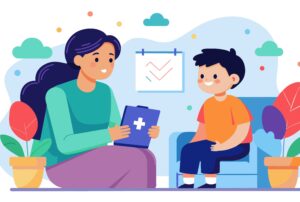What do you really know about ADHD?
This article has been researched and written by Nayla Daou. AI has not been used in producing this article.
ADHD, or attention deficit disorder, is a commonly known mental health disorder and can be easily described by teasing apart its acronym. Most of us have been made aware of the condition through social media, advertisements or friends but what does it really mean to have it and how is it diagnosed? To begin to answer that question, we must become familiar with the ADHD spectrum.
Have you ever been working on a project and had a great deal of difficulty focusing? Distractions turn your attention away; noises make you lose your train of thought and there’s always something else to do. These are all symptoms of ADHD, but they do not necessarily mean that you have the disorder, you may simply be on the spectrum.
What is the ADHD Spectrum?
The ADHD spectrum is a tool used to measure your level of symptoms and their severity. It was traditionally assumed that children unable to sit still in their classes were the only ones to receive the diagnosis of ADHD. However, new research has revealed that the disorder isn’t limited to a particular age group and is not a one-size-fits-all symptom-based diagnosis. In fact, many times, two individuals can have the disorder but display different behaviors. This is where the spectrum comes into play.
Mental health professionals use the spectrum to look at their patients from a holistic perspective, taking into account the varied symptoms and the motivations behind behavior. From their history and current symptoms, psychologists use the information to place patients on a spectrum from mild to severe. Depending on where they land on the spectrum, various treatments may be suggested.
ADHD Treatment
Treatment of the disorder can range from ADHD medication, to healthy living and behavioral strategies. Some examples of behavioral strategies and healthy living support that are used to treat patients with ADHD are meditation and mindfulness, dietary changes and deep breathing techniques. Those whose symptoms are on the more significant end of the spectrum might receive multiple types of supportive treatments. Whereas, individuals with milder symptoms may only receive behavioral and healthy living strategies.
Overview
With new evidence emerging that ADHD is not a one-size-fits-all diagnosis and treatment plan, it’s important to recognize the significance of understanding the spectrum. From mild to severe, the ADHD spectrum provides insight into the disorder and gives mental health professionals the ability to find treatment plans that are tailored to their patient and their individual symptoms.
What Really Happens Behind the Door of Couples Therapy?
Couples don’t usually come to therapy because they stopped caring about each other – they …
Why Acknowledging Children’s Emotions Should Come First
When a child is crying, shouting, refusing, or melting down, the most visible piece is the behavior.
The Executive Brain: Why ADHD Is About More Than Attention
When most people think of ADHD, they picture distraction, fidgeting, or forgetfulness.
Do You Know Why We Can’t “Trauma-Proof Our Lives”?
It’s the event we didn’t see coming, couldn’t …
How to Support Your Child After a Learning Diagnosis
A learning diagnosis can be intimidating at first, for both parents and children. You could be …
Validating, Not Fixing: Helping Young Children Feel Seen and Understood
When a child cries or gets frustrated, an adult can be quick to say, “Don’t be sad” or “It’s not …







